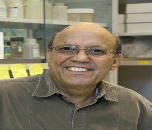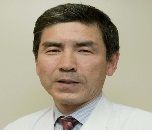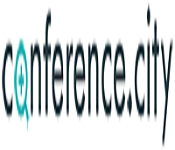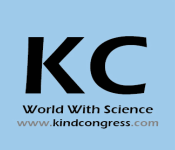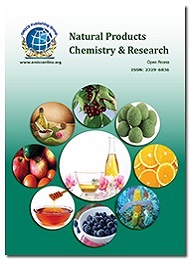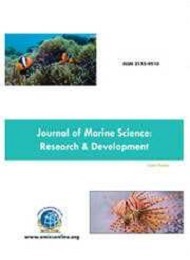Theme: New Era Medications: Novel Research Trends on Natural Products & Organic Supplements
Naturalproducts 2021
ConferenceSeries organizes 3000+ Global Events inclusive of 1000+ Conferences every year across Europe, USA & Asia with support from 1000 more scientific societies and publishes 700+ Open access journals which contain over 70000 eminent personalities, reputed scientists as editorial board members.
Natural Products Conference 2021 invites all the participants across the globe to attend the ‘’8th International Conference and Exhibition on Natural Products and Medicinal Plants Research” Medicinal Plants and Natural Products conveys recent discoveries and developments in Natural Drugs discovery and natural produced drugs. A complete knowledge of a scientific discipline that described the Marine drug discovery and development and Medicinal Plants and Natural Products now explores the use of Natural products in industry as well as healthcare.
Medicinal Plants and Natural Products 2021 is the chemistry of natural compounds is relatively unexplored and represents a vast resource for new medicines to combat major diseases such as cancer, AIDS or malaria. Research typically focuses on sessile organisms or slow moving animals because of their inherent need for chemical defenses. Standard research involves an extraction of the organism in a suitable solvent followed by either an assay of this crude extract for a particular disease target or a rationally guided isolation of new chemical compounds using standard chromatography techniques.
Moreover, it is likely that for every compound that does make it to the market, a better drug with distinct Medicinal chemistry, improved bioavailability and less unwanted side effects can be found either in chemical libraries or among the much larger number and diversity of natural products.
In recent years, marine natural product bio prospecting has yielded a considerable number of drug candidates. Most of these molecules are still in preclinical or early clinical development but some are already on the market, such as cytarabine, or are predicted to be approved soon, such as ET743 (YondelisTM). Research into the ecology of marine natural products has shown that many of these compounds function as chemical weapons and have evolved into highly potent inhibitors of physiological processes in the prey, predators or competitors of the marine organisms that use them. Some of the natural products isolated from Medicinal Plants have been shown to be, or are suspected to be, of microbial origin and this is now thought to be the case for the majority of such molecules. Marine microorganisms, whose immense genetic and biochemical diversity is only beginning to be appreciated, look likely to become a rich source of novel chemical entities for the discovery of more effective drugs.
Track 1: Ethnobotany and Ethnopharmacology
Ethnobotany and Ethnopharmacology are the essential starter, in the context of sustainable development and honest sharing of the benefits derived from exploitation of natural resources such as plants. Ethnobotany and Ethnopharmacology, like all ethno sciences, have in common a human and cultural component. Ethnopharmacology has also undergone an evolution from the classic to modern concept, but changes are lighter than those suffered by Ethnobotany. Modern ethnopharmacology embraces botanical, ethnobotanical, phytochemical, ethnopharmacological, pharmacological and toxicological fields. Phytochemistry, Pharmacy, History, Geography, Ecology and other art and science fields will be taken into account.
Track 2: Herbal Drug Formulations
Herbal formulations means a dosage form consisting of one or more herbs or processed herbs in specified quantities to provide specific nutritional, cosmetic benefits meant for use to diagnose, treat, mitigate diseases of human beings or animals, alter the structure or plant physiology of human beings or animals. Phytochemical Standardization contain an active substance or herbal substance or herbal preparation or herbal substance in combination with one or more Polyherbal Formulations. Herbal formulations are obtained by subjecting herbal substances to treatments such as extraction, distillation, expression, fractionation, purification, concentration or fermentation include comminuted or powdered.
Track 3: Medicinal Chemistry
Medicinal chemistry deals with the discovery, design, development and both plant Pharmacognosy and analytical characterisation of drug substances. Medicinal chemists are indispensable in the preclinical stages of drug development, and again as organic chemistry in drug quality control Medicinal chemists have a chance to participate in the fundamentals of prevention, therapy and understanding of diseases and thereby to contribute to a healthier and happier life. Medicinal chemistry deals with the facets of Chemistry, Pharmacoanalysis and the chemical analysis of compounds in the form of like small organic molecules such as insulin glargine, erythropoietin, and others. It also helps in developing new chemical entities from existing compounds that are of medicinal and therapeutic effect.
Track 4: Natural Products Chemistry
A natural product is a chemical compound or substance produced by a living organism—that is, found in nature. In the broadest sense, natural products include any substance produced by life. Natural products can also be prepared by drug discovery (both plant synthesis and total synthesis) and have played a central role in the development of the field of organic chemistry by providing challenging synthetic targets. The term natural product has also been extended for commercial purposes to refer to cosmetics, dietary supplements, and foods produced from natural sources without added artificial ingredients, Within the field of organic chemistry, the definition of natural products is usually restricted to mean purified organic compounds isolated from natural sources that are produced by the pathways of primary or secondary metabolism Within the field of medicinal chemistry.
Track 5: Plant Biotechnology
Plant biotechnology is a set of techniques used to adapt plants for specific needs or opportunities. Situations that combine multiple needs and opportunities are common. For example, a single crop may be required to provide sustainable food and healthful nutrition, protection of the environment, and opportunities for jobs and income. Finding or developing suitable plants is typically a highly complex challenge. Plant Biotechnology is the integrated use of plant biochemistry, microbial growth and bio-engineering science in order to achieve technological application of the capabilities of micro-organism, cultured tissue cells and part thereof. Application of science and technology to plants, parts, products and models, to alter living or inert materials, in order to develop knowledge, goods and services An important aspect of all plant tissue culture processes is the culture of either the plant cells or animal cells or microorganisms.
Track 6: Systems Biology
It is a holistic approach to deciphering the complexity of computational biology systems that starts from the understanding that the networks that form the whole of living organisms are more than the sum of their parts. It is collaborative, integrating many scientific disciplines – biology, computer science, engineering, bioinformatics, physics and others – to predict how these systems change over time and under varying conditions, and to develop solutions to the world’s most pressing health and environmental issues. Systems biology is an approach in environmental chemistry to understanding the larger picture—be it at the level of the organism, tissue, or cell—by putting its pieces together. It is a biology-based interdisciplinary field of study that focuses on complex interactions within biological systems, using a holistic approach (holism instead of the more traditional reductionism) to biological research Systems biology is the study of biological systems whose behaviour cannot be reduced to the linear sum of their parts’ functions.
Track 7: Toxicology
Toxicology is the study of chemicals that can cause problems for living things. It’s a wide-ranging field, the chemicals may occur naturally or have been created in a lab or factory the living things may be humans, pets, livestock, or plant toxicology living in a pond. And the problems that concern tissue culture stretch from inconvenience to disaster from mild skin irritation, for instance, to death. Toxicology is a field of science that helps us understand the harmful effects that chemicals, substances, or situations, can have on people, animals, and the environment. Some refer to toxicology as the “Science of Safety” because as a field it has evolved from a science focused on studying poisons and adverse effects of chemical synthesis to a science devoted to studying safety.
Track 8: Phytochemistry and Pharmacognosy
Phytochemistry deals with methods of obtaining these active ingredients, their classification according to the functional organic chemical group to which it belongs, and studies the analytical methods to verify its quality. Pharmacognosy is the study of drugs from the natural origin. The word pharmacognosy is a Greek word: "pharmakon" meaning drug or medicine, and "gnosis" meaning knowledge. The American Society of Pharmacognosy defines pharmacognosy as "the study of the physical, chemical, biochemical and analytical chemistry of drugs, drug substances or potential drugs or drug substances of natural origin as well as the search for new drugs from natural sources".
Track 9: Natural Product as Anti-Cancer Agents
Cancer is a major cause of deaths all around the globe. Although numerous anticancer drugs are available, most of them are expensive and have serious side effects. Natural compounds are usually non-toxic and inexpensive. Many such compounds have been identified and explored for their health benefits for centuries, and several nutritional factors derived from natural products have attracted considerable attention as therapeutic agents for the prevention and treatment of cancer. Current cancer therapies often involve surgical removal and radiation treatment of the large accumulated biomass of cancer, typically followed by systemic chemotherapy treatment used for maintenance treatment.
Track 10: Medicinal Plant Research
Plants and other living organisms have great potential to treat human disease. There are two distinct types of natural synthesis that seek to develop this potential. The Botanicals and Human Health Program is to identify botanical products with the potential to improve human health and to enable the safe, effective and proper use of high quality botanical products by healthcare professionals and consumers. Include economical production of podophyllotoxin, an important intermediate in the synthesis of anticancer agents, agronomic potential of medicinal plants in Mississippi, value-added development of botanicals through harvest, post-harvest and storage practices, and market research to quantify commercial potential.
Track 11: Traditional and Alternative Medicine
Traditional medicine is an amorphous concept that comprises a range of long-standing and still evolving practices based on diverse beliefs and theories. Bodeker and Burford point out the dichotomous situation of particular forms of traditional medicine being practised in their countries of origin and also in countries to which they have been “imported” Traditional medicine it is defined as the medical treatment based on the use of drugs and surgery to treat symptoms (signs of illness) Alternative medicine covers a broad range of treatments and is also referred to as complimentary alternative medicine (CAM). Practitioners emphasize education, prevention of disease, and holistic treatment. Some of the most well-known alternative treatments include acupuncture, aromatherapy, chiropractic, herbal medicine, homeopathy, massage, meditation, therapeutic touch, and yoga Traditional medicine treats the body part or symptom of the disease, which earns it criticism for neglecting the big picture of total body care.
Track 12: Plant Physiology and Pathology
Plant Physiology is a broad-spectrum that welcomes high-quality submissions in all major areas of plant physiology growth and development, biochemistry and metabolism, transport and translocation, and plant responses to biotic and abiotic stress. Plant Pathology is defined as the study of the organisms and environmental conditions that cause disease in plant, the mechanisms by which this occurs, the interactions between these causal agents and the plant (effects on plant growth, yield and quality), and the methods of managing or controlling plant disease. It also interfaces knowledge from other scientific fields such as mycology, plant microbiology, virology, biochemistry, bio-informatics, etc.
Track 13: Plant Science Research
Plant Science or more appropriately referred to as Botanical science, is the branch of biological science that involves study of the morphology, anatomy, taxonomy and physiology of plants. It also includes study and analysis of molecular aspects of plant metabolic pathways, and the plant ecology relationships existing between various plants. In addition, plant sciences also include the study of basic concepts and applied aspects of experimental plant biology, genomics, proteomics, plant biochemistry, cell biology, evolutionary biology, functional plant breeding and systems biology.
Track 14: Homeopathic and Ayurvedic medicines
Homeopathic medicine is a system that stimulates our immune system to fight disease In Homeopathic remedies, highly diluted substances are prescribed. Homeopathic Bach flower remedies use flowers steeped in sunlit water. Homeopathic remedies are prepared according to the guidelines given in the holistic medicines. In preparing Homeopathic medicine, the ingredients are diluted with distilled water or alcohol and shaken vigorously. Ayurvedic medicines a holistic system with its own fundamental tenets. Ayurveda emphasizes the balance between body, mind, and soul for healthy living.
Track 15: Medicinal and Traditional Herbs
Traditional use of herbal medicines refers to the long historical use of these medicines. Their use is well established and widely acknowledged to be safe and effective, and may be accepted by national authorities. The traditional medicines healer therapies contain many medicines for one ailment. Out of the various medicines, one is selected by the herbal healer against a particular disease according to the symptoms and secondary effects. Several plants are identified and used against one disease and are used according to their availability in the region. Herbal medicines are naturally occurring, plant-derived substances that are used to treat illnesses within local or regional healing practices. These products are complex mixtures of organic chemicals that may come from any raw or processed part of a plant.
Track 16: Herbal Cosmetics
Women are obsessed with looking beautiful. So, they use various beauty products that have herbs to look charming and young. An herbal cosmetic have growing demand in the world market and is an invaluable gift of nature. Herbal formulations always have attracted considerable attention because of their good activity and comparatively lesser or nil side effects with synthetic drugs. The herbal cosmetics manufactured and used commonly for daily purpose include herbal face wash, herbal conditioner, herbal soap, herbal shampoo etc. The industry is now focusing on the growing segment with a vast scope of manifold expansion in coming years.
Track 17: Agricultural chemistry
Agricultural chemistry is the study of both chemistry and biochemistry which are important in agricultural production, the processing of raw products into foods and beverages, and in environmental chemistry monitoring and remediation. These studies emphasize the relationships between plants, animals and bacteria and their environment. The science of chemical compositions and changes involved in the production, protection, and use of crop sciences and livestock. As a basic science, it embraces, in addition to test-tube chemistry, all the life processes through which humans obtain food and fibre for themselves and feed for their animals. As an applied science or technology, it is directed toward control of those processes to increase yields, improve quality, and reduce costs
Track 18: Microbial ecology
Microbial ecology (or environmental microbiology) is the ecology of microorganisms: their relationship with one another and with their environment. It concerns the three major domains of life—Eukaryota, Archaea, and Bacteria—as well as viruses. Natural microorganisms, by their omnipresence, impact the entire biosphere. The immensity of microorganisms' production is such that, even in the total absence of eukaryotic life, these processes would likely continue unchanged. As a consequence of the quantitative magnitude of microbial life. Microorganisms, by their omnipresence, impact the entire biosphere. Microbial life plays a primary role in regulating biogeochemical systems in virtually all of our planet's environments, including some of the most extreme, from frozen environments and acidic lakes, to hydrothermal e vents at the bottom of deepest oceans, and some of the most familiar, such as the human small intestine
Track 19: Crude Drugs and Plant Products
A crude drug is any naturally occurring, unrefined substance derived from organic or inorganic sources such as plant, animal, bacteria, organs or whole organisms intended for use in the diagnosis, cure, mitigation, treatment, or prevention of disease in humans or other animals. Crude drugs are vegetable or animal drugs that contain natural substances that have undergone only the processes of collection and drying. The term natural substances refers to those substances found in nature that have not had man-made changes made in their molecular structure. They are used as medicine for human being and animal, internally and externally for curing disease.
Track 20: Plant Tissue Culture
Plant tissue culture is a collection of techniques used to maintain or grow plant cells, tissues or organs under sterile conditions on a nutrient culture medium of known composition. Plant tissue culture is widely used to produce clones of a plant in a method known as micropropagation. Different techniques in plant tissue culture may offer certain advantages over traditional methods of propagation. Plant tissue culture relies on the fact that many plant cells have the ability to regenerate a whole plant (totipotency). Single cells, plant cells without cell walls (protoplasts), pieces of leaves, stems or roots can often be used to generate a new plant on culture media given the required nutrients and plant hormones.
Track 21: Heterocyclic Chemistry
Compounds classified as heterocyclic probably constitute the largest and most varied family of organic compounds. After all, every carbocyclic compound, regardless of structure and functionality, may in principle be converted into a collection of heterocyclic synthesis by replacing one or more of the ring carbon atoms with a different element. Even if we restrict our consideration to oxygen, nitrogen and sulfur (the most common heterocyclic elements), the permutations and combinations of such a replacement are numerous. Heterocyclic chemistry is the branch of organic chemistry dealing with the synthesis, properties, and applications of these heterocycles.
Pharmacognosy market analysis
The global market for botanical and plant-derived drugs was valued at $23.2 billion in 2013 and $24.4 billion in 2014. This total market is expected to reach $25.6 billion in 2015 and nearly $35.4 billion in 2020, with a compound annual growth rate (CAGR) of 6.6% from 2015 to 2020.
The pharmaceutical and healthcare areas are expected to be some of the most active industries in the coming years with active markets in the U.S., Western Europe, North America, and China. The U.S. Pharmaceutical market is the world’s most important national market. Together with Canada and Mexico, it represents the biggest continental Pharms market around the globe. The United States alone holds over 45 per cent of the global pharmaceutical market. In 2016, this share was valued around 446 billion U.S. dollars.
Global Market Analysis of Natural Skin and Hair care Products:
Organic skincare products dominated the global demand, and the segment generated revenue exceeding USD 3 billion in 2015. Organic hair care products are anticipated to grow at a CAGR of over 9% from 2016 to 2025. The increasing importance of natural ingredients for providing dandruff protection, hair fall control, and shining effect is expected to have a favorable impact on the industry.
Asia-Pacific is expected to witness significant gain over the forecast period. Increasing consumption of cosmetic products in emerging economies such as China and India in light of new product launches along with rising concerns towards aging, UV effects and hair fall will fuel organic personal care industry growth.
Global Markets Analysis for Nutraceuticals
The global nutraceuticals market should reach $285.0 billion by 2021 from $198.7 billion in 2016 at a compound annual growth rate (CAGR) of 7.5%, from 2016 to 2021
Global Markets and Technologies for Biofuel Enzymes
The global revenue for biofuel enzymes totalled $623.0 million in 2014, and should total $652.1 million in 2015 and $1.0 billion by 2020, registering a compound annual growth rate (CAGR) of 10.4%.
Conference Highlights
- Ethnobotany and Ethnopharmacology
- Herbal Drug Formulations
- Medicinal Chemistry
- Natural Products Chemistry
- Plant Biotechnology
- Systems Biology
- Toxicology
- Phytochemistry and Pharmacognosy
- Natural product as anti-cancer agents
- Medicinal plant research
- Traditional and Alternative medicine
- Plant Physiology and Pathology
- Plant Science Research
- Homeopathic and Ayurvedic medicines
- Medicinal and Traditional Herbs
- Herbal Cosmetics
- Agricultural chemistry
- Microbial ecology
- Crude Drugs and Plant Products
- Plant Tissue culture
- Heterocyclic chemistry
To share your views and research, please click here to register for the Conference.
To Collaborate Scientific Professionals around the World
| Conference Date | June 16-17, 2021 | ||
| Sponsors & Exhibitors |
|
||
| Speaker Opportunity Closed | Day 1 | ||
| Poster Opportunity Closed | Click Here to View | ||
Useful Links
Special Issues
All accepted abstracts will be published in respective Our International Journals.
- Journal of Pharmacognosy & Natural Products
- Journal of Marine Science: Research & Development
- Natural Products Chemistry & Research
Abstracts will be provided with Digital Object Identifier by







